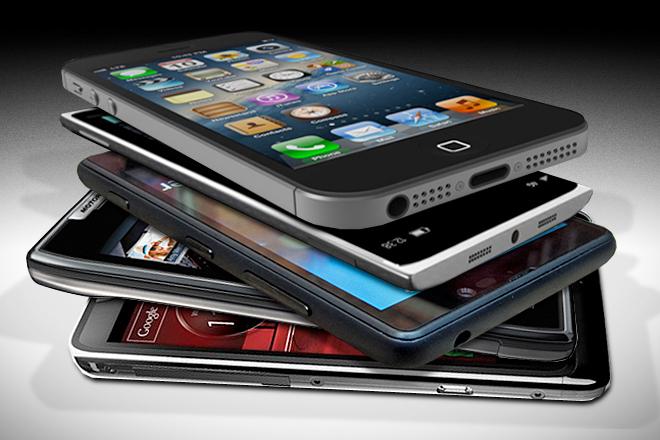It’s a scene that every student has seen at least once in their high school career. A student is slouching in their desk, head down, hands in their lap. Occasionally they smirk and soon their thumbs start moving. Yet, despite their incredible stealth, everyone knows what they are trying to hide: Texting.
Cell phone usage in school has been banned as long as the mobile phones have been around, with the mobile devices causing distraction and delay in the learning process. Yet, that does not stop students from trying to hide their quick thumbs from administration behind obstacles such as desks, backpacks, and textbooks.
On the first day of every school year, advisory teachers read the cell phone regulations enforced in the handbook aloud to their students. The rules limit the use of phones to lunch waves only, and if a student is caught using their phone in a class or other forbidden time, it is to be confiscated and turned into the office for retrieval by a parent only.
Smartphones are becoming increasingly common in high schools. The increase in this technology seems to have led to more usage of the devices during class periods. In a March 2012 study conducted by the Pew Research Center, the average amount of daily texts from a teen’s phone has risen from 50 to 60 in the past year. Also, 31% of ages 14-17 say that they own a smartphone; with only 8% of ages 12-13 say they have one.
A clerk at a Verizon Wireless kiosk located in BJ’s Wholesale Club in Waterford reported, “We get teenagers in here often looking for smartphones. Yeah, they are usually the primary people that come in and buy these phones because most of them are getting them through their parents.” Despite this however, she added, “We still get teens that look to get simple phones too.”
When asked if there was an abundance of teens looking for a particular type of phone she said, “No, I don’t think so. We get a pretty even amount of teens looking for smartphones and teens looking for regular phones.”
“A lot of our generation’s culture and social life revolves around our phones. People want to be constantly connected, and they do it with their cell phones all the time, no matter where they are,” said junior Nathaniel Ross.
Ross added, “I think that there is a rebellious element [to the constant usage of their phones]. Kids feel like the administration is infringing upon their culture, and they want to fight back.”
Other students believe there is a more innocent aspect to the cell phone problem. “Perhaps they are bored and have no other means to entertain themselves aside from paying attention in class,” said freshman Meika Gathy, “or they feel the need to check their phones as a way to stay within the loop of information and they just want to know what is going on with their Facebook, Twitter, Instagram, and all of that. But, I can’t really say. I’ve never had a reason to ‘sneak’ my phone.”
Gathy has had no reason to “sneak” her phone because she cannot use her phone to check said social networks. Gathy does not have a smartphone. Smartphones are an increasing hot item in the lives of high school students, combining their phones with their computers and their media players, all at their fingertips. Students who have these devices, most commonly Apple’s iPhone and Samsung’s Galaxy, have an increased desire to use their phones because there are near-infinite capabilities. Checking Facebook, tweeting on Twitter, and looking at photos on Instagram are just some activities that can be done.
Gathy admitted, “Yes, if I had a smartphone I would probably use it more often during the school day and after school. Smartphones can be very useful and convenient, but they can also be very distracting.”
Because of the steady amount of teenagers using for smartphones as well as regular phones, the problem still remains in Waterford High. World Language teacher Mrs. Ewoldt said that last year she caught students using their phone at least “two or three times a week.” She added, “I think that they have a sense of entitlement.”
Despite the rules consistently being strictly enforced each year, it is unclear whether or not the sneaking will cease.
“The kids who text in class are going to text no matter what, and if you want them to stop you have to get them interested in what’s being taught” said Ross.
Gathy has a bit more optimism saying, “I think that [the stricter rules] will have a greater effect than in the past on the cutting down the usage of cellphones in class, but I don’t think any solution to the cell phone problem will ever work one hundred percent of the time.”


